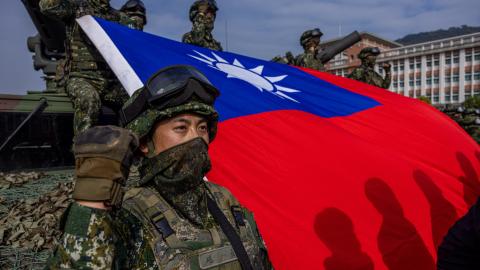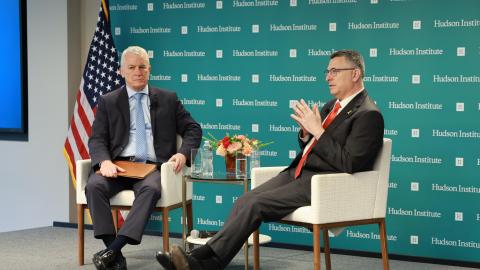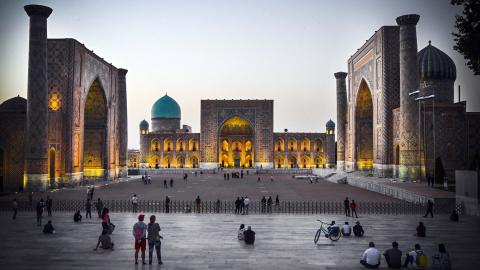Recent terrorist attacks in Paris and Mali point out the futility of seeing jihadi terrorism as a problem that can be geographically confined. Terrorism killed more than 32,600 people last year, an 80 percent increase from 2013 and the sharpest yearly rise on record, according to the Global Terrorism Index. Just the last ten days have witnessed Jihadi terrorist attacks in places far from one another. Baghdad, Beirut, Paris and Bamako were all targets of global jihad, which for decades has refused to recognize borders.
Western policy makers have tried to grapple with the jihadi challenge since the 9/11 attacks by Al-Qaeda. The United States led NATO into war in Afghanistan, from where the 9/11 attacks had emanated, only to find that the terrorists they sought to destroy in Afghanistan reappeared in other countries.
Al-Qaeda in Iraq, decimated by sustained U.S. military operations, morphed into the Islamic State, just as the Mujahideen in Afghanistan — trained and armed by the West to fight the Soviet Union during the 1980s — had mutated into the Taliban. The assassination-by-drone campaign kills those that are known by Western intelligence services for their role in previous terrorist attacks. But predicting the next target or identifying its likely perpetrators with any certainty is not easy.
In 2002, President George W. Bush’s first Defense Secretary, Donald Rumsfeld, posed the question, “Are we capturing, killing or deterring and dissuading more terrorists every day than the madrasas … are recruiting, training and deploying against us?” Over a decade later, it appears that the answer to that query is in the negative. Moreover, terrorists are not coming from Islamic seminaries (madrasas) alone but from the rank and file of disgruntled Muslims all over the world.
Westerners seeking a short and simple solution to the terrorist threat get daunted by demographics. There are 1.6 billion Muslims in the world, not all of whom are terrorists, and it is impossible for the West to declare war on all Muslims without dire consequences. Restricting travel to and from Muslim countries or shutting down immigration still does not solve the problem of homegrown jihadis in Europe and North America.
Another legitimate concern is whether the West would retain its claim to moral leadership of a modern world based on universal human rights if it accepts suggestions of extremists in its own ranks about isolating, monitoring or deporting all Muslims.
The theology of global jihad seems to be the extreme response of Islamists to the decline of Muslim power, especially over the last two centuries. Contemporary Islamism grew out of the dissatisfaction of religiously conservative Muslims with the swift modernization that came in the wake of colonial rule. While some Muslim leaders fought for freedom from colonial oppression by asserting nationalism, the Islamists spoke of recreating the era of Islam’s earlier glory.
The rise of Islamism over the last several years has coincided either with the decline or weakening of nationalism in the Middle East, or as a result of invoking Islam to bolster national identity in some states.
Four out of five terrorist attacks in 2014 took place in one of five countries: Syria, Iraq, Nigeria, Afghanistan and Pakistan. Of these, Syria and Iraq are going through decompression after decades of repressive Arab nationalist regimes led by members of religious minorities. The Baathist dictatorships in Baghdad and Damascus suppressed the religion of the majority sect in each country, setting the stage for sectarian conflict when the regimes faltered. ISIL is now taking advantage of that sectarian disequilibrium to push for its own brand of medieval caliphate.
Under corrupt military rule, Nigeria failed to develop a sense of nation that could bind its Muslims and Christians as well as its various tribes together under a fair constitutional order. The country had a civil war in the 1960s and has faced demands for Sharia rule in its Muslim states almost since independence. Unaddressed political and social crises have enabled Boko Haram to unleash a reign of terror in the name of Islam.
Pakistan has sought to bind its multi-ethnic federation under the banner of Islam. Its army, in partnership with the United States, equipped and mobilized the Afghan Mujahideen during the 1980s ostensibly to defeat the Soviet Union. But the state-supported jihad continued from Pakistan well after the Soviets withdrew from Afghanistan.
Pakistan deployed jihadis in an attempt to wrest control of the disputed Kashmir region from India and generally to serve as an equalizer in Pakistan’s military competition with its much larger eastern neighbor. Pakistan also supported Taliban rule in Afghanistan to exercise influence over its neighbor with whom some of Pakistan’s population shares ethnic ties.
For years, Pakistan has maintained its position as a key U.S. ally by arguing that it only supports jihadi groups that have a regional agenda while it remains committed to helping the west in tracking down global jihadis. In the immediate aftermath of 9/11, Pakistani cooperation enabled the U.S. to arrest a large number of members of Al-Qaeda. But the U.S. did not press Pakistan too much over tackling anti-India jihadis and even accepted American casualties at the hands of Afghan Taliban operating out of Pakistan.
That divisions among jihadi groups are now diminishing is borne out by the failure of Pakistan to restrain groups cultivated by its military from attacking targets other than those of strategic value to Pakistan. Lashkar-e-Taiba (LeT), often seen as fighting only for Kashmir, was responsible for the November 2008 attacks on civilians in Mumbai. The November 13 Paris attacks bore a striking resemblance to the Mumbai attacks in terms of choice of targets and the manner of execution.
Last week, a U.S. drone strike in Afghanistan’s Kunar province resulted in the death of several Pakistani jihadis belonging to the Al-Badar group of Kashmiri jihadis as well as LeT. Their dead bodies were brought back to Pakistan and buried after public funerals involving leaders and members of the Jamaat-e-Islami, a mainstream Islamist party similar to the Arab Muslim Brotherhood.
Not only are lines blurring between jihadi groups, it now appears that the ties between political Islamist groups and jihadis are far deeper than has been acknowledged in the West.
Western strategy for dealing with this jihad without borders must include a political plan for the five countries that accounted for four-fifths of all terrorist deaths in 2014. This would require stabilization of Syria and Iraq under inclusive non-sectarian governments; a serious effort in Nigeria to establish the writ of the central government in areas now controlled by Boko Haram, and a similar decisive push against the Taliban in Afghanistan.
It would also involve ensuring that Pakistan stops making distinctions among jihadi groups, supporting some while targeting others.
In addition to containing the jihadis in the five countries where they are most active, it is also important to debunk the wild conspiracy theories and distorted narratives that contribute to recruitment of jihadis faster than their elimination. An ideological effort to discredit the jihadis is necessary to prevent them from appearing in a new form elsewhere, after being crushed in one location.

















